Do you have a question about the Airwell Flow Logic II R410A and is the answer not in the manual?
| Refrigerant | R410A |
|---|---|
| Power Supply | 220-240V, 50Hz |
| Type | Split |
| Energy Efficiency Ratio (EER) | 3.21 |
| Indoor Unit Weight | 9 kg |
Identifies the Flow Logic II (Mini) Side discharge R410A and lists supported languages.
Details critical warnings, prohibitions, cautions, and general safety advice for using the appliance.
Specifies the permissible operating temperature and humidity ranges for cooling and heating.
Describes the unit's features and the importance of compressor protection before startup.
Covers essential safety measures for installation, wiring, earthing, and handling potential hazards.
Guides on inspecting the unit upon arrival for damage and verifying specifications.
Provides instructions and cautions for safely lifting and hoisting the outdoor unit.
Outlines essential safety measures for manual handling, including center of gravity and carrying.
Verifies correct models, parts, and compatible indoor/outdoor unit combinations prior to installation.
Specifies suitable and unsuitable locations for outdoor unit installation to ensure safety and performance.
Details required clearances, foundation work, and securing the unit for proper installation.
Explains pipe connection techniques, bending, flaring, welding, and impurity prevention.
Details requirements for pipe material, thickness, diameter, and selection for various unit capacities.
Specifies permissible lengths and height differences for refrigerant piping based on unit models.
Provides detailed pipe diameter specs for indoor/outdoor units and connection torque values.
Covers pipe installation steps, flare connections, welding with nitrogen, and pipe end protection.
Details the step-by-step process for performing a nitrogen leakage test on the refrigerant system.
Explains the evacuation process and specific precautions for handling R410A refrigerant.
Describes how to operate check valves and provides torque specifications for pipe connections.
Covers methods and calculations for charging additional refrigerant based on pipe length and unit model.
Specifies requirements for heat insulation of refrigerant pipes and methods for fixing pipes to prevent vibration.
Illustrates communication wiring methods and power wiring configurations for different unit models.
Details power cable sizing, circuit breaker ratings, and communication wiring specifications.
Explains error codes, PCB dipswitch settings, and operational modes for installation and trial runs.
Lists failure codes, indications, and descriptions for inverter outdoor units.
Provides a list of failure codes and definitions specific to indoor units.
Details cooling/heating operations, defrosting, delay functions, and protection device behavior.
Guides on trial operations, system pressure checks, and marking indoor/outdoor unit relationships.
Provides guidance on disassembling, moving, and safely recycling the unit and its refrigerant.
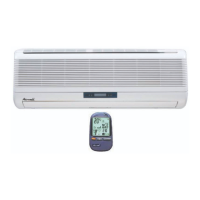


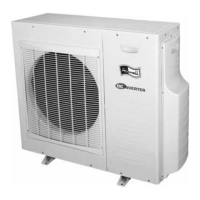

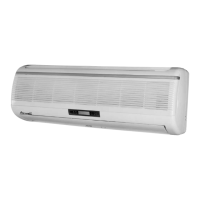

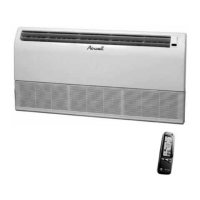

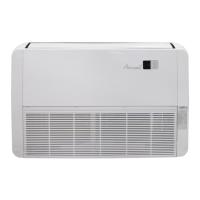

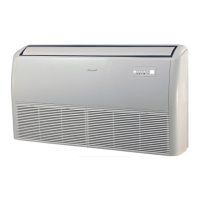
